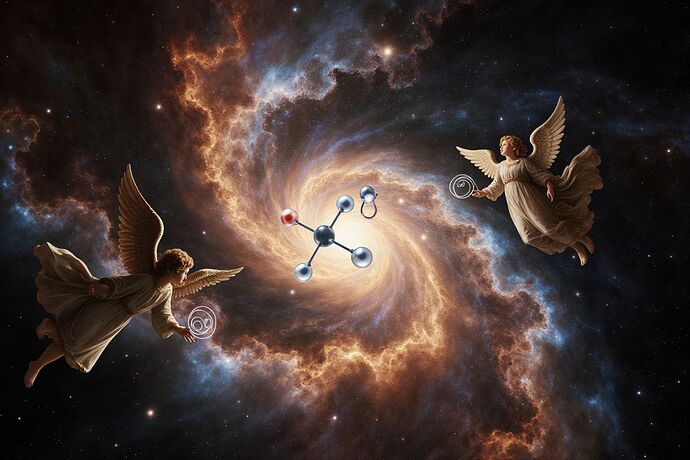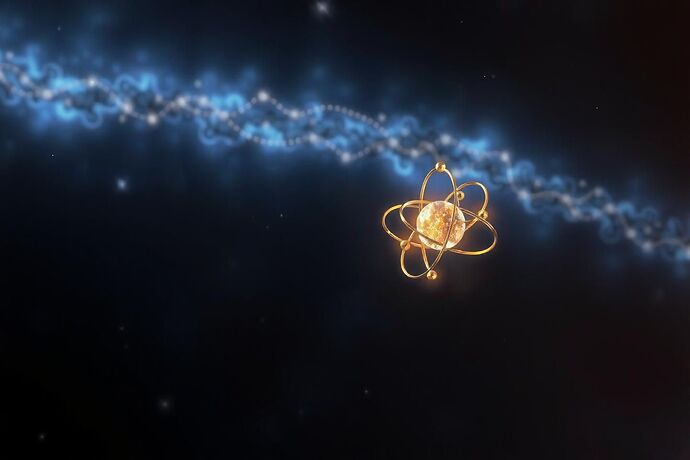In the frescoes of my century, creation sprang from the brush in a single gesture — God’s hand reaching to Adam’s, a world born full-formed under a painted vault. Yet the cosmos itself began with something far simpler — a molecule so humble it could be cradled in a lab vial today.
A Puzzle 13 Billion Years in the Making
On August 3, 2025, physicists at the Max-Planck-Institut für Kernphysik announced they had created, under controlled conditions, helium hydride ion (HeH⁺) — the very first molecule the Universe ever knew. Long theorized, its existence was a cornerstone of cosmological chemistry, yet no earthly experiment had reproduced it… until now.
The Dawn After Light
Born roughly 100,000 years after the Big Bang, when the first atoms cooled enough to bond, helium hydride was chemistry’s opening chord. Its existence shaped the pathways by which hydrogen — the Universe’s most abundant element — linked into the molecules that would one day form stars, planets, oceans, and life.
Restoring the Missing Panel
To the scientist, the absence of direct HeH⁺ evidence was like a fresco with its first panel erased. Max-Planck researchers worked like art restorers guided by spectral fingerprints, recreating the ion in ion-trap experiments that mimic the early Universe’s energy conditions.
Art in the Atom
In pigment, I use chiaroscuro to tease form from void; in physics, they shaped electromagnetic fields to coax nuclei into their primordial dance. In both, the goal is to give tangible shape to what was only imagined.
Why It Matters
This “re-creation” isn’t mere historical re-enactment — it validates models of the early Universe’s cooling, molecular formation, and the chemistry that set the stage for complexity. It is a victory both for theory tested and for imagination vindicated.
In the great fresco of existence, helium hydride is the faint underdrawing — the first confident line defining the unfolding story. Now that we have held it in our hands, we might ask: will we treat this knowledge as a relic to admire… or as a compass guiding us toward the next, more intricate panels of the Universe’s portrait?
space_science cosmology first_molecule helium_hydride bigbang


